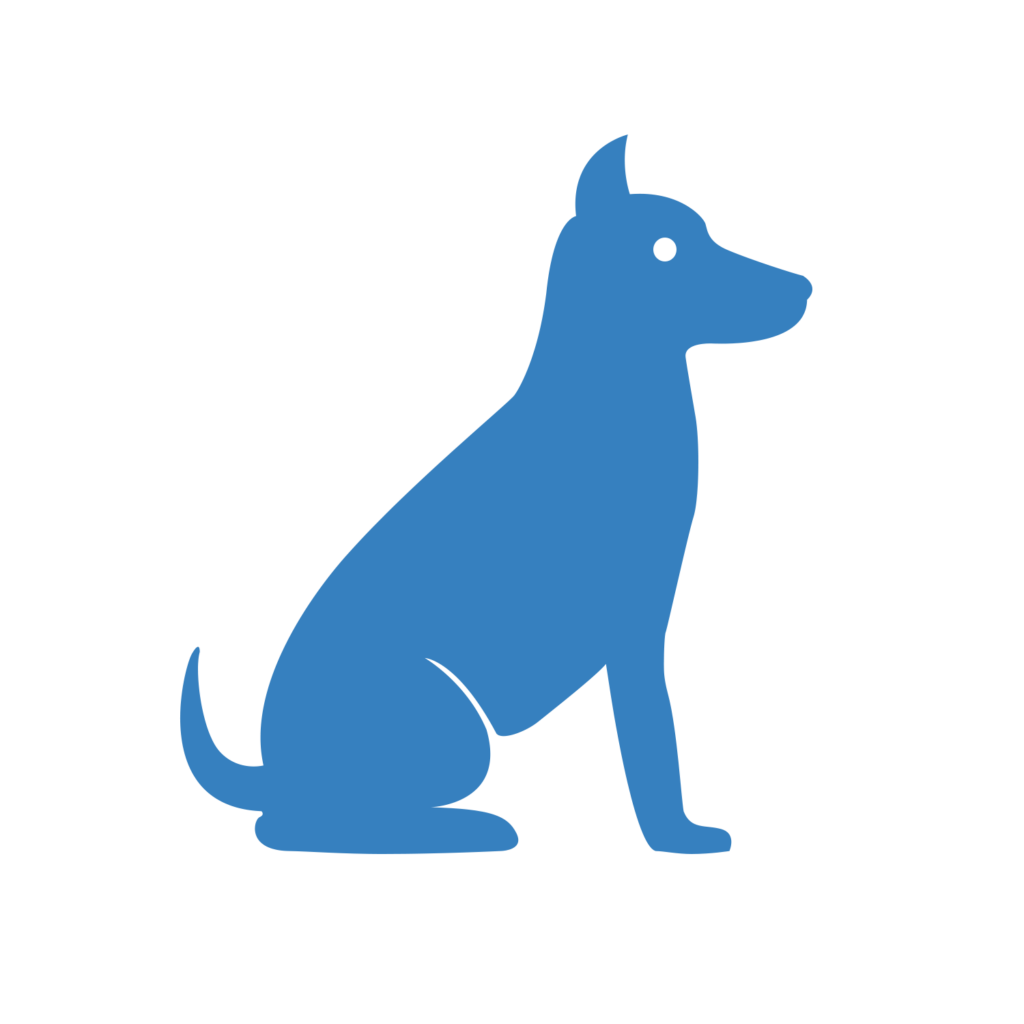

Black and Tan, Fawn, Sable, Tan Points, Tricolor, Solid Black, Recessive Black, and Wild/Sable
Turnaround: 3-5 business daysTurnaround: 7-10 business days
Price: $40.00Price: £27.00
Breeds: All
Description
There have been four different alleles identified in a dog’s genes that signal the agouti coloration (this coloration can be exemplified as the coloration of the wild brown rabbit), also known as the A-locus. If you’d like to learn more about the difference between an allele and a gene, click here. These alleles are ay, aw, at, and a.
These alleles are dominant in a hierarchy. This means that ay is more dominant than aw, aw is more dominant than at, and at is more dominant than a. For example, if a dog has ayat, the color associated with ay will appear on the dog, rather than the color associated with at. However, this is all dependent on whether or not the dog carries the dominant black gene at the K-locus or the recessive gene on the E-locus. You can learn more about how the genes interact with one another by reading the flow chart we have provided. If a dog carries one or both of these genes, the A locus is muted and the agouti coloration will not appear on the dog. This is because both the K locus and the E locus are dominant over the A locus.
The Agouti gene (A-Locus) determines the base coat color in dogs that are ky/ky for dominant black. Dogs must be ky/ky in order to express any alleles on the A-Locus. The color of the dog can still be modified by other genes, such as by the B-Locus or D-Locus, however. For example, if a dog is b/b (recessive) for the B Locus, they will still have areas that are pigmented as black. However, it will be modified to appear as a chocolate pigment.
However, if a dog’s A locus codes for the fawn coloration and the dog is b/b for the B locus, the fawn dog will have a chocolate nose. In contrast, a dog that is at/at will have a chocolate and tan coat, rather than black and tan. If a dog is n/n for a gene, that means that the dog is recessive for this gene and the typical colors associated with the pattern are not expressed. This is a generic term used to refer to the expression of any coat color.
The "ay" Allele
The ay allele is the most dominant of all four alleles on the A-locus. The ay gene produces a range of coat colors like light fawn colors, darker red colors, or even a sable. This variation of color is due to variances in the expression of this gene. Dogs that are ky/ky for the K Locus and have one or two copies of the ay allele will always express the ay coat pattern. This is because the ay allele is more dominant than the ky allele expression. It is important to note, however, that a dog can appear as fawn or sable and could also carry any other of the three alleles. These other alleles, however, would not be expressed, and a person wouldn’t be able to tell the dog had the other alleles based on looks.
This does not mean that the dog with a fawn coat (ay) will always pass on a copy of the ay allele or the coat color that the parent has. A dog that is ay/aw, ay/at, or ay/a has a 50% chance of passing on the ay allele and a 50% chance of passing on the other alleles. A dog that has two copies of the ay allele will always pass on the ay allele. As long as that dog is bred to another dog that is n/n (recessive) for the K-Locus, the dog will always produce fawn or sable pups.
The "aw" Allele
The aw allele produces a color known as "wild sable." This coat coloration is sometimes called the "wild type," or in some breeds, "wild boar." With this coloration, the hairs switch pigmentation from a black color to a reddish or fawn color. This color is sometimes seen in German Shepherds and other shepherd breeds. It is recessive only to the ay allele. This also means that it is dominant to the at and a alleles, and will be expressed before the at and a alleles.
If a dog is n/n for the ay allele (meaning this allele is not expressed), a dog with one or two copies of the aw allele will express the aw coloration. A dog that is n/n for ay and has one copy of the aw allele can carry either the at or "a" allele and not express them. However, even though the at and “a” alleles do not appear on the coat, either allele can be passed to any offspring.
The "at" Allele
Both the "black-and-tan" and "tricolor" phenotypes (expressed traits) are caused by the at allele. A tricolor dog is black-and-tan, with white. White is generally just an absence of color, rather than a pigment the dog expresses. For a dog to be black-and-tan or tricolor, he must be n/n for the dominant black gene (the K-Locus). This means that the K-Locus is not expressed, and the dog will not be black. Furthermore, the dog must have either two copies of the at allele, or have one copy of the "at" allele and one copy of the "a" allele.
The dog must be n/n for both the ay and aw alleles in order for at to be expressed. This is because the ay and aw alleles are dominant over at. A dog that is at/at will always pass on a copy of the at allele to any offspring. This does not ensure that the puppies will be black-and-tan. However, the coat color of the offspring also depends on the genotype of the other parent.
The "a" Allele
If a dog is ky/ky on the K-Locus, the dog must be n/n for ay, aw, and at in order for the dog to express the a/a coloration. A dog that is solid black with the recessive K locus must also have the recessive a/a allele in order to express the black coloration. It is important to make this distinction because a dog can also be solid black with kB/kB or kB/ky under the K-Locus. The A locus is not needed for this type of dog. Therefore, this type of black dog does not need the a/a coloration in order to express the black color. You can learn more about this type of dog by reading about the K-locus or the B-locus.
This is also the case for dogs that are bicolor, and are negative for K-Locus (ky/ky). This is generally the cause of a solid black German Shepherd. The "a" allele is sometimes referred to as the recessive black gene. Because this allele is the most recessive, for a dog to express this phenotype he must have two copies of the "a" allele and be n/n for ay, aw, and at. A recessive black dog will always pass on the "a" allele to all offspring.
Possible Results
| Genotype | Description |
|---|---|
| AY/AY | Dog is homozygous for fawn/sable. |
| AY/AYt | Dog is homozygous for fawn/sable. |
| AY/a | Fawn carrying recessive black |
| AY/at | Dog is fawn/sable and carries for tan point gene. |
| AY/aw | Dog is fawn/sable and carries wild sable. |
| AYt/AYt | Dog is homozygous for fawn/sable. |
| AYt/at | Dog is fawn/sable and carries the gene for tan points. |
| a/a | Dog is homozygous for recessive black. |
| at/a | Dog has tan points and carries recessive black. |
| at/at | Dog has two copies of the gene causing tan points. |
| aw/a | Dog is wild sable and carries recessive black. |
| aw/at | Dog is wild-sable and carries the gene responsible for tan points. |
| aw/aw | Dog is homozygous for wild-sable. |
Reference
Dreger DL, Parker HG, Ostrander EA, Schmutz SM. Identification of a mutation that is associated with the saddle tan and black-and-tan phenotypes in Basset Hounds and Pembroke Welsh Corgis. J Hered. 2013 May-Jun; 104(3):399-406. [PubMed: 23519866]
Kerns JA, Newton J, Berryere TG, Rubin EM, Cheng JF, Schmutz SM, Barsh GS. Characterization of the dog Agouti gene and a nonagouti mutation in German Shepherd Dogs. Mamm Genome. 2004 Oct; 15(10):798-808. [PubMed: 15520882]